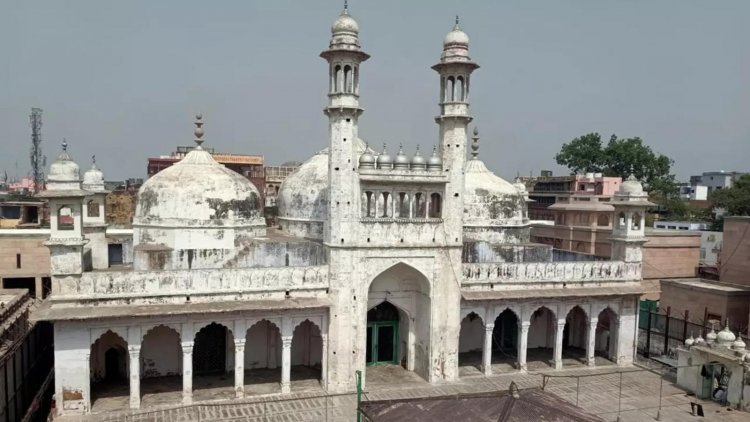Gyanvapi: Another Temple-Mosque Dispute in the Making
Asia News Agency

A survey report of the structure prepared by the. Archeological Survey of India has concluded that there existed a Hindu temple prior to the construction of the existing structure, that is the mosque. The western wall of the Gyanvapi mosque located in Varanasi, Uttar Pradesh, it states is the remaining part of a pre-existing Hindu temple, according to the ground penetrating radar (GPR).
‘The western wall of the Gyanvapi mosque existing structure is the remaining part of a pre-existing Hindu temple. This wall, made of stones and decorated with horizontal mouldings, is formed by remaining parts of western chamber, western projections of the central chamber and western walls of the two chambers on its north and south. The central chamber attached to the wall still exists unchanged whereas modifications have been made to both the side chambers,’ the ASI report says.
The Arabic-Persian inscription found inside a room mentions that the mosque was built in the 20th regal year of Aurangzeb (1676-77 CE). Hence, the pre-existing structure appears to have been destroyed in the 17th century, during the reign of Aurangzeb, and part of it was modified and reused in the existing structure.
‘Based on scientific studies/ survey carried out, study of architectural remains, exposed features and artefacts, inscriptions, art and sculptures, it can be said that there existed a Hindu temple prior to the construction of the existing structure,’ the ASI added. The report makes other observations to support it’s conclusions.
The Varanasi court, in July last year, had directed the ASI to conduct the scientific survey of the Gyanvapi mosque premises to ascertain if any Hindu temple had existed beneath the mosque or not.
Serious legal test before courts
Now, a Varanasi court Wednesday ruled that the Archeological Survey of India (ASI) report on the Gyanvapi mosque complex survey will be given to both sides.
This has sent a legal test before the civil court in Varanasi and the Supreme Court - whether a title suit can exist on the Kashi-Viswanth mosque disputed site since the Places of Worship (Special Provisions) Act, 1991, puts a constitutional bar on it.
Section 3 and Section 4 of the 1991 Act essentially declare that the religious character of a place of worship, barring the one at Ayodhya, shall continue to be the same as it was on August 15, 1947, and that no person shall convert any place of worship of any religious denomination into one of a different denomination or section. This is the constitutional bar under the Places of Worship Act, 1991 which forms the basis of deciding the title of the disputed site.
While hearing a plea challenging the maintainability of the Gyanvapi suit, the Supreme Court had in May 2022 observed that ‘finding the nature of the religious place’ is not barred under the 1991 law. '…the ascertainment of a religious character of a place, as a processual instrument, may not necessarily fall foul of the provisions of Sections 3 and 4 (of the Act)…,’ it had said. Essentially, this ascertainment is limited to 1947 and not prior to the construction of the mosque itself.
The Supreme Court is, however, yet to hear final arguments to decide whether the 1991 Act bars even the filing of such a plea. So far, only oral observations have formed the basis of this argument but the Court is yet to conclusively rule on the issue.
Separately, a constitutional challenge to the 1991 Act is also pending in the Supreme Court. It had in 2019 indicated the case could be referred to a larger constitution bench. However, the Centre is yet to file a response in the case.
ASI report could be contested
Though the Archaeological Survey of India report submitted to the Varanasi court, and to both the parties to the dispute now, suggests ‘there existed a Hindu temple prior’ to the Gyanvapi mosque, Apurva Vishwanathan (Senior Assistant Editor • The Indian Express) believes “it would be considered expert evidence that could be contested in Court.
“Essentially, Courts will have to determine first whether the ASI report can be relied upon conclusively and then what does the existence of a Hindu temple mean to the religious character of the mosque on August 15, 1947.”
A similar ASI report in 2003 was cited in the Ayodhya Ram temple suit. While pronouncing its order in November 2019, the Supreme Court had rejected the ASI report as inconclusive.
















